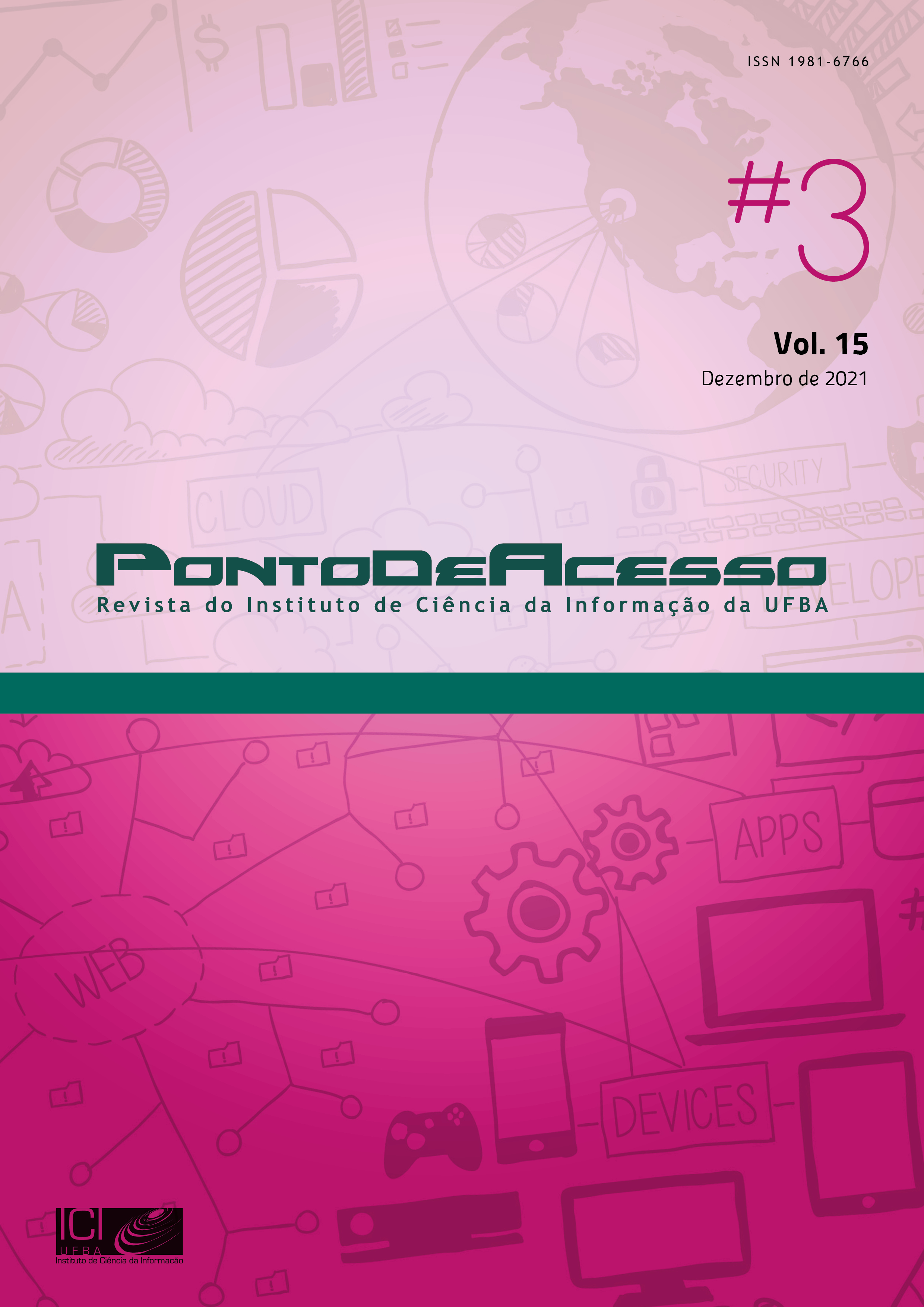ONTOGENY OF THE RELIGION CLASS OF THE UNIVERSAL DECIMAL CLASSIFICATION IN SPANISH
Keywords:
Universal Decimal Classification, Bibliographic classification schemes, Ontogeny, Knowledge organization systemsAbstract
Knowledge increases and changes over time, therefore bibliographic classification schemes, as knowledge organization systems, must be updated and revised. This paper analyses and compares class 2 Religion of the last three editions published on paper and in Spanish of the Universal Decimal Classification. The study of the ontogeny of this class highlights the implications of the revision of the aforementioned class in the process of searching and retrieving information.
Downloads
References
Barité Roqueta, M. G. (2011). La garantía literaria como instrumento de revisión de sistemas de organización del conocimiento: Modelo y aplicación. Granada: Universidad de Granada.
Broughton, V. (1999). Class 2 Religion and Theology: A new schedule for UDC Main Class 2. Extensions & Corrections to the UDC, 21.
Broughton, V. (2000). A new classification for the literature of religion. international cataloguing and bibliographic control, 29(4), 59-61.
Broughton, V. (2001). Expansion of Class 24—Buddhism. Extensions & Corrections to the UDC, 23, 11-14.
Broughton, V. (2004). Essential classification. London : Facet Publishing.
Broughton, V. (2010). Concepts and Terms in the Faceted Classification: The Case of UDC. Knowledge Organization, 37, 270-279. https://doi.org/10.5771/0943-7444-2010-4-270
Broughton, V., & Lomas, E. (2020). Philosophical Foundations for the Organization of Religious Knowledge: Irreconcilable Diversity or a Unity of Purpose? Knowledge Organization, 47(5), 372-392. https://doi.org/10.5771/0943-7444-2020-5-372
Google Books Ngram Viewer. (s. f.). Recuperado 15 de junio de 2021, de https://books.google.com/ngrams
Google Trends. (s. f.). Google Trends. Recuperado 15 de junio de 2021, de https://trends.google.es/trends/?geo=ES
Martínez Ávila, D., y Guimarães, J. A. C. (2013). Library classifications criticisms: Universality, poststructuralism and ethics. Scire, 19(2), 21-26.
McIlwaine, I. (1993). A Proposal for the Revision of UDC Class 2 Religion with general observations on the introduction of greater facet analysis into the UDC. Extensions & Corrections to the UDC, 15, 31-44.
McIlwaine, I. (1994). Report of the UDC Editor in chief. Extensions & Corrections to the UDC, 16, 9-18.
McIlwaine, I., y Mitchell, J. S. (2006). The new ecumenism: Exploration of a DDC/UDC view of religion. Extensions & Corrections to the UDC, 28, 9-16.
Miksa, F. L. (1998). The DDC, the universe of knowledge and the post-modern library. Albany New York : Forest Press.
San Segundo Manuel, R., y AENOR. (2001). Clasificación Decimal Universal: (CDU) (Ed. abreviada de la Norma UNE 50001:2000 / adaptada por Rosa San Segundo Manuel.). Madrid : AENOR.
San Segundo Manuel, R. y AENOR. (2004). Clasificación Decimal Universal: (CDU) (Ed. abreviada de la Norma UNE 50001:2004, 2ВЄ ed. / adaptada por Rosa San Segundo Manuel.). Madrid : AENOR.
San Segundo Manuel, R. y AENOR. (2016). Clasificación Decimal Universal: (CDU) (Edición abreviada.). AENOR.
Satija, M. P., y Martínez Ávila, D. (2017). Mapping of the Universe of Knowledge in Different Classification Schemes. International Journal of Knowledge Content Development & Technology, 7(2), 85-105. https://doi.org/10.5865/IJKCT.2017.7.2.085
Slavic, A., Cordeiro, M. I., y Riesthuis, G. (2008). Maintenance of the Universal Decimal Classification: Overview of the past and preparations for the future. International Cataloguing and Bibliographic Control, 37(2), 23-29.
Slavic, A., Cordeiro, M. I., y Riesthuis, G. (2009). El desarrollo de la Clasificación Decimal Universal: 1992-2008 y más allá. Revista española de documentación científica, 32(3), 107-118. https://doi.org/10.3989/redc.2009.3.658
Tennis, J. (2202). Subject Ontogeny: Subject Access Through Time and the Dimensionality of Classification. Challenges in Knowledge Representation and Organization for the 21st Century: Integration of Knowledge across Boundaries. Proceedings of the Seventh International ISKO Conference. https://ssrn.com/abstract=2879017
Tennis, J. (2007a). Diachronic and synchronic indexing: Modeling conceptual change in indexing languages.
Tennis, J. (2007b). Scheme Versioning in the Semantic Web. Cataloging & Classification Quarterly, 43(3-4), 85–104. https://doi.org/10.1300/J104v43n03_05
Tennis, J. (2010). Measured Time: Imposing a Temporal Metric to Classificatory Structures. En Advances in Knowledge Organization (Vol. 12, pp. 223-225).
Tennis, J. (2012). The Strange Case of Eugenics: A Subject’s Ontogeny in a Long-Lived Classification Scheme and the Question of Collocative Integrity. Journal of the American Society for Information Science and Technology, 63(7), 1350-1359. https://doi.org/10.1002/asi.22686
Tennis, J. (2019). Four Orders of Classification Theory and Their Implications. Cataloging & Classification Quarterly, 56, 1-9. https://doi.org/10.1080/01639374.2018.1521622
Tennis, J. (2002). Subject Ontogeny: Subject Access through Time and the Dimensionality of Classification. Challenges in Knowledge Representation and Organization for the 21st Century: Integration of Knowledge across Boundaries: Proceedings of the Seventh International ISKO Conference, 8, 54-59.
UDC Consortium. (s. f.). Recuperado 12 de junio de 2021, de http://www.udcc.org/
UDC Consortium. (2000). Revised UDC Tables. Extensions & Corrections to the UDC, 22, 81-142.
UDC Summary. (s. f.). Recuperado 15 de junio de 2021, de http://www.udcsummary.info/php/index.php
Downloads
Published
How to Cite
Issue
Section
License
Copyright (c) 2021 PontodeAcesso

This work is licensed under a Creative Commons Attribution 4.0 International License.
A Ponto de Acesso adota a licença Creative Commons Atribuição 4.0 Internacional (CC BY 4.0). Por meio desta licença, os autores retêm os direitos autorais de seus trabalhos, concedendo à revista o direito de primeira publicação. O conteúdo publicado pode ser compartilhado e adaptado por terceiros para qualquer finalidade, inclusive comercial, desde que seja dada a devida atribuição de autoria, incluindo menção à publicação inicial nesta revista e indicação de eventuais alterações. Esta licença preserva a integridade dos trabalhos em ambiente de acesso aberto, assegurando o reconhecimento adequado da autoria e da publicação original. Ao submeterem trabalhos à Ponto de Acesso, os autores concordam expressamente com estes termos de licenciamento.


